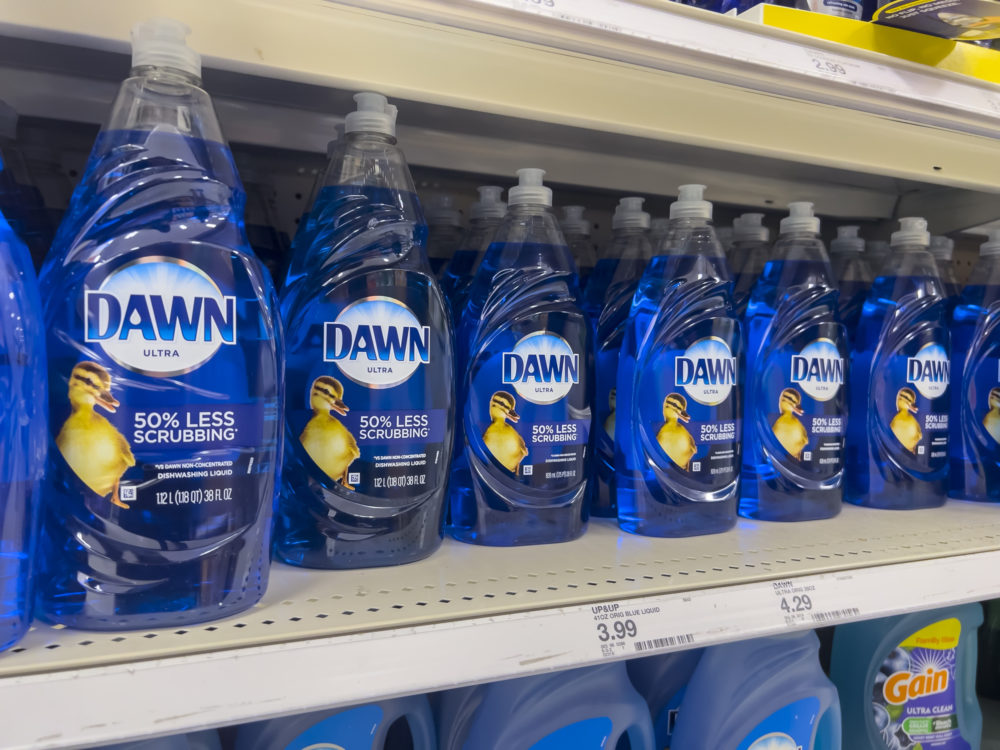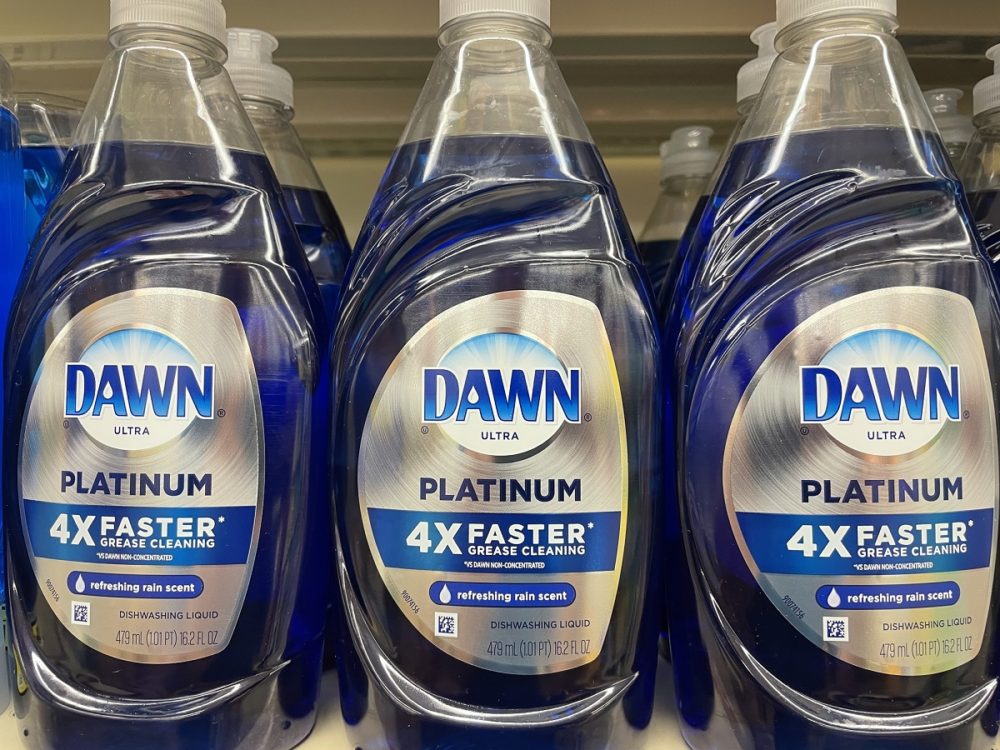Can You Put Dawn Dish Soap In RV Black Tanks?
What Is Special About Dawn Dish Soap?
While the complete “recipe” is inaccessible for the masses, a Dawn spokeswoman has pointed the magic can be attributed to a blend of uniquely powerful surfactants—or, the chemical compounds that reduce the surface tension of a liquid when it’s dissolved, aka the stuff that cuts the grease.

Contents
The listed ingredients on the bottle, however, are: water, sodium lauryl sulfate, sodium laureth sulfate, lauramine oxide, sodium chloride, phenoxyethanol, PEI-14 PEG-10/PPG-7 copolymer, methylisothiazolinone, fragrance, blue 1, yellow 5, red 33.
The company seems to have added its formula somewhat recently, as well, expanding the list on their Website and explaining each ingredient’s purpose in the formula: https://dawn-dish.com/en-us/how-to/what-dawn-is-made-of-ingredients.
However, there are no phosphates, no phthalates and no triclosan.
In addition to cleaning, Dawn dish soap also kills a variety of bugs, such as:
- Ants
- Aphids
- Bed bugs
- Boxelder bugs
- Carpenter ants
- Crawlers (immature scales)
- Earwigs or even
Although, Procter and Gamble offer a variety of colors and scents when it comes to Dawn dish soap (such as purple lavender, orange Dawn, green spring scent or clear dye-free option for folks with sensitivities to dyes), the “classic” blue Dawn dish soap is the most potent and versatile dish soap the company offers. It’s a deeper blue colored liquid in a clear bottle (often with a duckling on the bottle due to Dawn being used to wash animals after oil spills). The smell is a unique Dawn (lightly floral clean) scent.
Why Use Dawn Dish Soap To Clean Your RV Black Tanks?
Dawn dish soap is likely already in your RV kitchen for dishwashing. Its versatility in cleansing power makes it a great soap for other uses, from grease spills to wipe-ups. According to the manufacturer it is eco-friendly and biodegradable so that you don’t have to worry if it is dumped out with the dishwater in your gray tank.
Dawn dish soap is cheap, easily available, eco-friendly, and non-corrosive.
Since all human waste goes from the RV toilet into the black tank, which is a holding tank for all the waste until it is “dumped” or emptied, cleaners like Dawn are great at breaking down any gunk, sanitizing and scenting the black tank’s interior.
How To Clean Your RV Black Tank With Dawn Dish Soap
Make sure you have proper water and sewer access.
Follow the steps below:
- Drain the tank by connecting the sewer hose to the dump site (always black first, then gray tank).
- If your RV has a tank rinser, flush valve, or macerator, use this tool to flush the tank’s inside. This will help prevent blockages in the future.
- Add 4-5 quarts of fresh water to the tanks to provide a good base for future use.
- If you are doing a deep clean/ want to eliminate odors, you would add your cleaning solutions as the final step. This could include Dawn dish soap or another safe cleaner of your choice.
If you have a “poop pyramid”, you will have to use enzymes (such as RV Digest-It) to break it down, or get a professional RV tech who specializes in black tank cleaning to help remove the build-up.
Check out this video for more details:
How Much Dawn Dish Soap Do You Need?
When cleaning the black tank, one cup of Dawn dish soap is the recommended amount to help clean the sensors, as well. You can buy Dawn dish soap in bulk. The classic blue Dawn dish soap is the most potent one and a gallon of blue commercial-grade costs about $32 on amazon.com (Dawn one gallon).
How Often Should You Clean Your RV Black Tank?
After emptying the black tank, you should always run water to rinse out your tank, keep some water in the black tank and then dissolve an RV treatment tab and flush it into the black tank. Some RVs have built-in sanitizing systems, so that you hook up the water hose and turn it on while the system rinses out the walls of your black tank.
Some RVers swear by using fabric softener to eliminate the black tank smell; however, often this is just masking the issue.
If you are a weekend warrior, the black tank should be sanitized in between trips.
For longer trips, you should commit to deep clean the black tank regularly to avoid that build-up and to counter any possible smell issues. Most RVers do this once a month or every other month, depending on the usage, weather and overall individual situation. Preventative maintenance helps reduce the need for deep cleaning.

Alternative Cleaners You Can Use For RV Black Tanks
Anyone who has dealt with black tank smell in the RV likely researched potential solutions and found that there is a plethora of “RV life hacks” on the Internet. Below are some of the most commonly used:
- There are enzyme solutions that you can use to help break down the bio matter and avoid the “poop pyramid”, which is waste buildup that can harden and build-up to the top of your black tank, if not dealt with.
- You can fill the black tank with ice cubes just before you travel to your next destination. The ice cubes will clunk around before they melt and ideally help remove and break down some of the build-up.
- To get rid of solids and odor in the black tank, try baker’s yeast and peroxide. Add 1 gallon of water to an empty black tank, 4 oz. of yeast and 10 oz. of peroxide.
- RV water tanks can be deodorized by flushing a solution of one cup baking soda mixed with one gallon of warm water.
- The Geo Method is a manner of treating and maintaining an RV’s black and gray water holding tanks by using a combination of water softener (many use Calgon and dissolve 1 cup on 2 gal of hot water), laundry detergent, plenty of water, and sometimes (but not always) chlorine bleach as a means of odor control. Use caution when mixing different cleaning chemicals with bleach etc., as the chemical reaction can be harmful to you and your black tank.
- Add 1 cup of the original “blue” Dawn dishwashing detergent. Or, add 1 cup of eco-friendly laundry detergent to the black tank when you add the water softener. This helps to further clean and deodorize the tank. Many RVers also include ¼ cup Borax to the black tank along with the detergent.
FAQs
Is there a shortage of Dawn dish soap?
The shortage can be attributed to greater numbers of consumers cooking and eating at home due to COVID-19 lockdown precautions. Concerns over shortages of hand soap and hand sanitizer have also led to some consumers stocking up on dish soap as an alternative solution for hand-washing. Als, P&G relies on China for parts and materials to manufacture and package its brands. It is automated and digitized, and will allow P&G to reduce costs and make products like Dawn dish soap and Head & Shoulders shampoo more efficiently.
Is it safe to mix vinegar and Dawn dish soap?
It is safe to mix vinegar and Dawn dish soap. While some people argue that the acidity of the vinegar makes the Dawn soap ineffective, there are many who swear by the potent mix of vinegar and BLUE Dawn dish soap for a plethora of applications.
The secret that makes the difference is the mix ratio. The “Miracle Cleaner” solution is to mix equal parts of Dawn dish soap and vinegar into a spray bottle.
Can you use Dawn dish soap with Norwex?
Yes, you can use any non-sudsing liquid dish soap with Norwex.
Can you use Dawn dish soap on your RV roof?
There is a general consensus in the RV community that Dawn dish soap is a good soap for RV roof washing. The RV roof should be cleaned at least four times per year, depending on the location one is at.
Can you put bleach in RV black water tanks?
Bleach is a very aggressive and corrosive cleaning agent, and it is more just a disinfectant when highly diluted. However, it is also cancer-causing and not good for one’s health (incl. inhalation). There are much safer and equally (if not more) potent cleaning and disinfecting alternatives than bleach. So, overall, avoid using bleach or antifreeze for your deep clean, as both of these can dry out rubber seals and ultimately ruin your sewage system.
